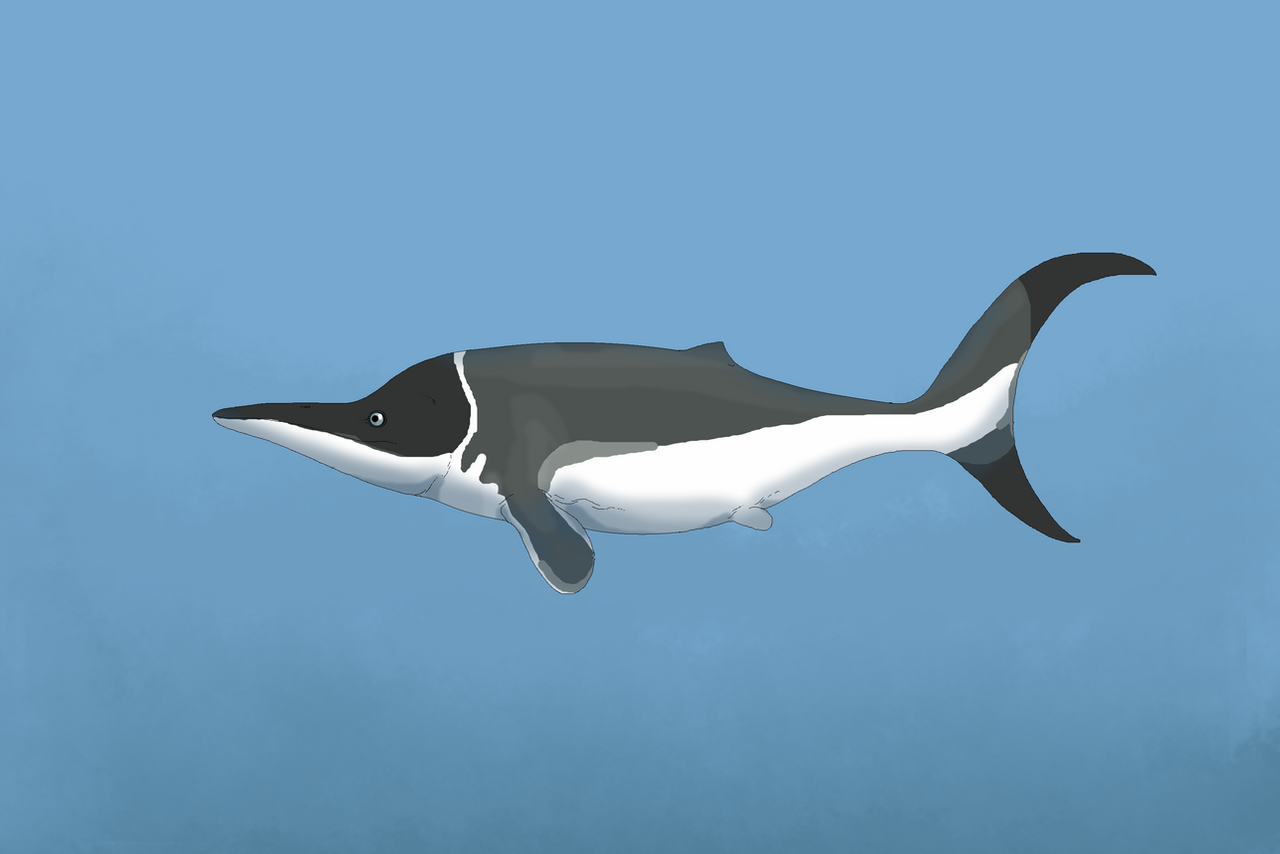HOME | DD
 DrPolaris — Tritonodyptes georgicus
DrPolaris — Tritonodyptes georgicus

#animal #marinereptile #mosasaur #speculativeevolution #speculativezoology
Published: 2020-03-22 15:29:35 +0000 UTC; Views: 7524; Favourites: 135; Downloads: 8
Redirect to original
Description
The last of the major Paleogene Mosasaur lineages were the early members of Plotosauroidea. These were the rarest but most derived of all Mosasaurs, demonstrating several anatomical and behavioral similarities to the long extinct Ichthyosaurs. Plotosauroid bodies were fusiform and torpedo-like in shape, enabling effective long-distance movement through the water. Their caudal tail flukes were large and deeply curved, while some genera bore a prominent dorsal fin. Unlike other Mosasaurs, these animals possessed long slender jaws with needle-like teeth, perfect for capturing their preferred prey: Cephalopods and small fish. Another feature unusual among Mosasaurs developed by Plotosauroids was the sometimes-complete loss of teeth altogether. Members of the family Tengugnathidae were entirely toothless and seem to have been suction feeders of some sort, showing a degree of convergent evolution with the ancient Ichthyosaur Shastasaurus. Unlike the latter however, Plotosauroids were not colossal animals, generally ranging between 5 and 9m in length. Tritonodyptes was a widespread genus of 6m long, fast swimming piscivore that inhabited most of the Late Eocene oceans of Alter Earth between 40-34 million years ago. Fossil remains attributed to this genus have been found in Eastern North America, New Zealand and Antarctica, with this wide range and efficient body plan ensuring the survival of its descendants into the Oligocene and beyond. T. georgicus possessed large eyes, a deeply curved tail fluke and slender jaws lined with tiny hooked teeth, suggesting a diet of smaller fish and cephalopods. After many more basal Mosasaur lineages vanished during the End Eocene extinction, the Plotosauroids exploded in diversity during the Oligocene and Miocene. In modern times, these animals inhabit ecological niches similar to those of Ocontocete whales, large tuna and swordfish present on Our World.Related content
Comments: 8

👍: 0 ⏩: 0

👍: 1 ⏩: 1

Yeah I didn’t want to do that as the Speculative Dinosaur Project did something similar.
👍: 0 ⏩: 0

👍: 0 ⏩: 1

👍: 0 ⏩: 1

Because there was simply not much more to cover. Messel was my main focus, but you will hear more about Europe fairly soon.
👍: 0 ⏩: 1

👍: 0 ⏩: 0























